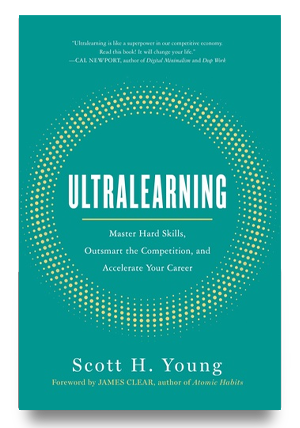This is a temporary archive of the May 2016 Top Performer free lesson series. This page will only be available until May 21st, after which it will be taken down. If you want to get the remaining lessons before its over, please join the newsletter here. If you want to save the text for later, I suggest printing a copy or saving the text on your computer.
This lesson was written by Cal Newport.
Provocative Advice
Six years ago, when I was still at MIT, I wrote a purposefully provocative article for Ramit Sethi’s blog. Around halfway through the piece I displayed a screenshot of my email inbox that contained two key messages related to my third book (which deconstructed the lives of high school students who did well in college admissions without suffering from high stress).
The first email was dated April 2007. As I explained, it was the message in which I first pitched to my agent the idea of writing a college admission title.
The second email was dated October, 2008. This was the message in which my publisher agreed to buy the book.
In non-fiction publishing, you sell the book before you write it, so the gap of 18 months between the original seed of the idea and the eventual deal were spent simply refining the proposal, again and again.
The conclusion I drew from that experience back then is a conclusion that has since been increasingly reinforced in my experience, and one that, according to feedback, has proved particularly crucial to the students who have passed through our Top Performer course: don’t get started.
Not All Effort is Created Equal
To elaborate on this claim, it’s important to recognize an important formula regarding ambitious projects:
(success of outcome) = (quality of idea) * (effort invested)
In other words, if the project you’re pursuing is not great, then it’s hard to make up for this deficit through hard work alone. On the other hand, a great idea not aggressively pursued will not generate many tangible rewards.
The phrase “don’t get started” is shorthand for the notion that if you’re pursuing something ambitious you probably need to spend an ambitious amount of time ensuring that you’ve identified the right path.
It took me a year and a half to get that book proposal right because it was a tricky topic. There were lots of books in that space, and there were, it turned out, lots of common objections to the basics of my premise. I wasn’t quite sure what I wanted to say or how best to say it, and it took a lot of thinking and discussions until I got to a structure that made me proud.
If I had instead been a believer in the “ready, fire, aim” philosophy, the resulting book would have been much worse (if I had been able to sell it at all).
The Importance of Planning in Career Improvement
I’m mentioning this concept in this particular series as it’s particularly relevant to career improvement. Scott and I observed that a common shortcoming in many career overhaul efforts is that people jump right into trying to “get ahead” without first spending the necessary time to figure out where to invest this effort.
Most self-improvement initiatives in which you might invest extra effort will have minimal returns (though they will make you feel satisfyingly more productive or clever in the short term).
The foundation to becoming a top performer, in other words, is finding the small number of high leverage pursuits that will yield huge returns for the time invested; and finding these targets almost always will take a considerable amount of active investigation, testing, and contemplation.
This is a lesson I learned in my own career in academia. As a graduate student, I liked to spin out theories about what I thought should matter for academic success — but my clever, lifehack-ey strategies yielded little return.
As described in a post I wrote back in 2013, once I joined the faculty at Georgetown I took the time to rigorously study the question of what matters and what doesn’t in achieving tenure. I ran a retrospective controlled trial focused on quantitative metrics. This trial yielded a clear result: paper citations rule all.
(Before this study, I had placed a lot of emphasis on publication quantity and originality/appeal of the problems studied. These turned out to be not so important.)
This taught me exactly where to invest my effort — as evidenced by the fact I was cited over 340 times last year and over 1500 times since arriving at Georgetown. (I’m currently waiting to hear a decision on my tenure case so we’ll know soon whether this investment was well-considered!)
Bottom Line
You certainly want to avoid unnecessary procrastination. But sometimes, “getting started” is not about diving into action, but instead about diving into research. Aiming your effort in the right direction can exponentially improve your returns.
Of course, walking the line between smart planning and paralysis by analysis is hard. But it’s a path you have to navigate once you move past the entry level in almost any pursuit and start fighting to become a stand out.


 I'm a Wall Street Journal bestselling author, podcast host, computer programmer and an avid reader. Since 2006, I've published weekly essays on this website to help people like you learn and think better. My work has been featured in The New York Times, BBC, TEDx, Pocket, Business Insider and more. I don't promise I have all the answers, just a place to start.
I'm a Wall Street Journal bestselling author, podcast host, computer programmer and an avid reader. Since 2006, I've published weekly essays on this website to help people like you learn and think better. My work has been featured in The New York Times, BBC, TEDx, Pocket, Business Insider and more. I don't promise I have all the answers, just a place to start.